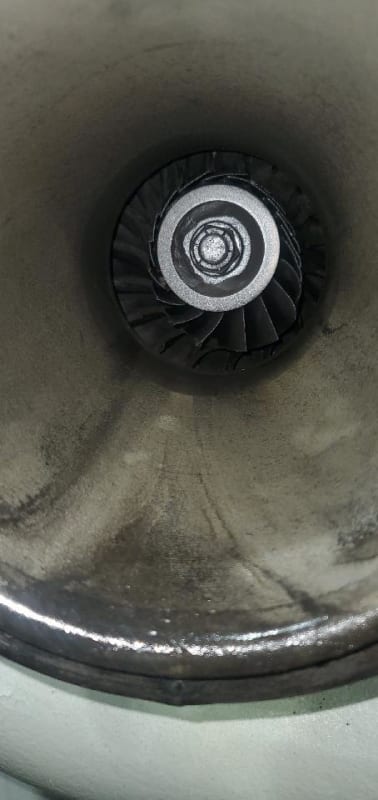Wes-in-WV
Mechanical
- Feb 23, 2022
- 9

641 HP centrifugal air compressor, 3045 ICFM design flow, 100 psig discharge to a common header (probably 1 other identical machine running at the time). High vibration alarm leads to disassembly and the discovery of bent impeller blades. I'm not sure what could have lead to this sort of damage. Any ideas?
